Where is the Alte Kalköfen Bird Observatory?
The Alte Kalköfen Bird Observatory is in southern Namibia, along the B4, the main road between Keetmanshoop, via Aus, to Lüderitz. From South Africa there are two sensible routes, both about 400 km from the border. You either enter Namibia at Noordoever, north along the N7 from Cape Town, with the road becoming the B1 in Namibia. Turn west onto the B4 at Keetmanshoop. Or you cross at Oranjemund, take the C13 via Rosh Pinah to Aus, and turn east on the B4. All these roads are tar and in excellent condition. The bird observatory is at the Alte Kalköfen Lodge, and it is about 2 km south of the B4.
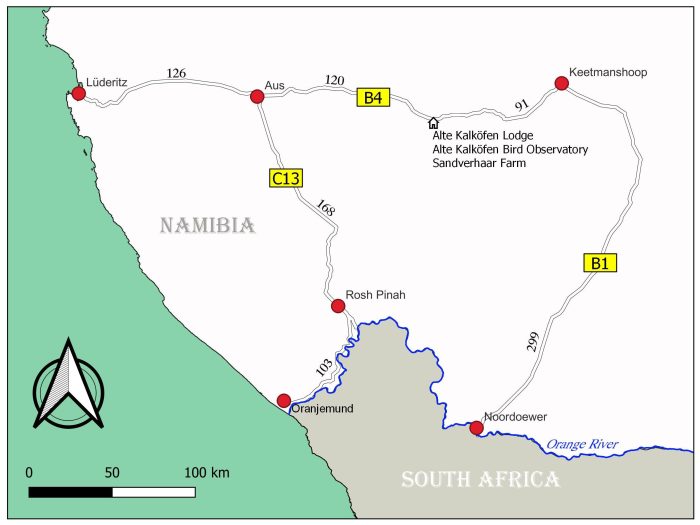
The Alte Kalköfen Lodge is outstanding. Frikkie and Hilde Mouton are exceptional hosts, the accommodation is comfortable, and the meals superb.
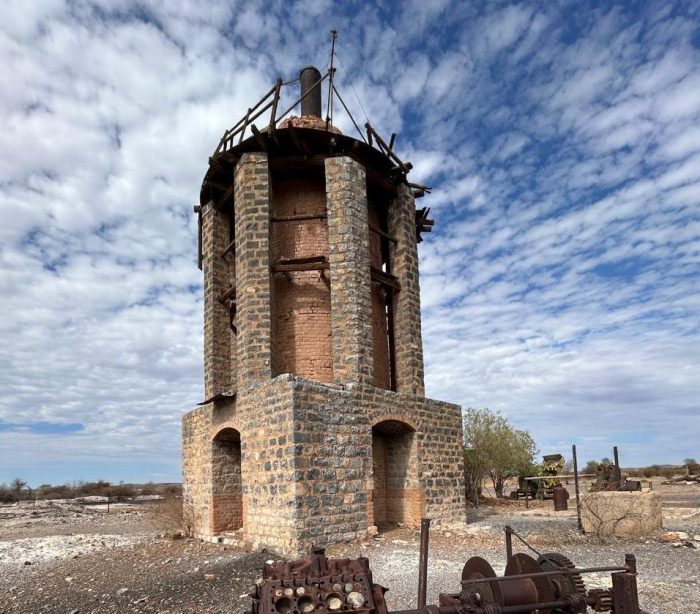
This is the Alte Kalköfen, the old lime kiln. This is the structure that gives the lodge, and the bird observatory, its name.

This is classified as river, known as the Gurib River. In its normal state, it is dry. But when there is a big thunderstorm anywhere in the catchment, it flows impressively for anything between a few days to a week. There has been a few millimetres of rain here, and within days there is this flush of green. Unless the initial rain is followed up by more within a week, it shrivels and dies.

The Gurib River lies within the band of trees in the distance. The Alte Kalköfen Lodge consists of the row of chalets just beyond the river. The area lies in the ecotone known as Dwarf Shrub Savanna, between the Namib Desert to the west and Kalahari Savanna to the east. There is a variety of natural habitats: sand dunes, sandy grass veld, karoo scrub and dry thorn veld, and the “forest” of camel thorn trees along river. The area around the lodge has gardens, and water. There is a grove of palm trees (below). In the years when they bear fruit, they attract lots of birds!

What species did we ring?

Acacia Pied Barbet. Counting from the outside, there are seven old primary feathers, Then one that is three-quarters grown. Inside that are two new primaries. So the bird ringer would score the primary moult as 55400 00000; scores of 5 for the two new primaries, score of 4 for the growing primary, and seven 0s for the old primaries.The moult score is recorded in the order that the feathers grow, from the inside to the outside.
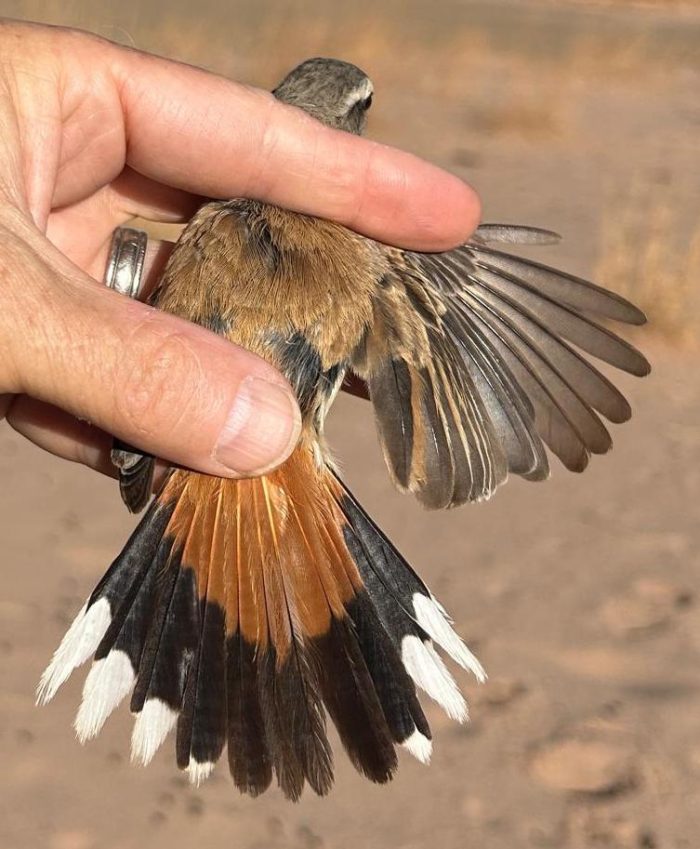
The distinctive tail pattern of the Kalahari Scrub-robin
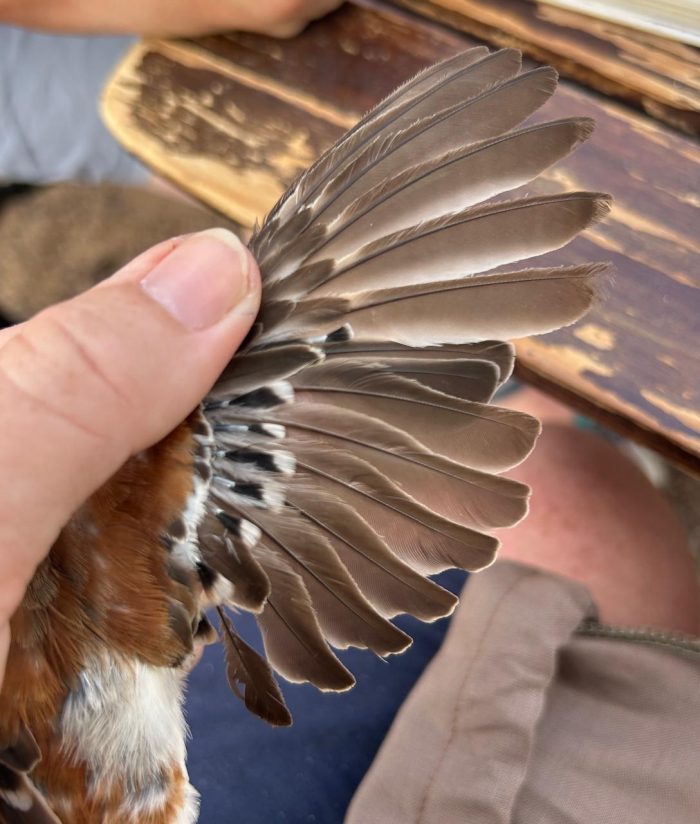
This Cape Sparrow is making a heavy investment in moult!

The wing of a Rufous-cheeked Nightjar.
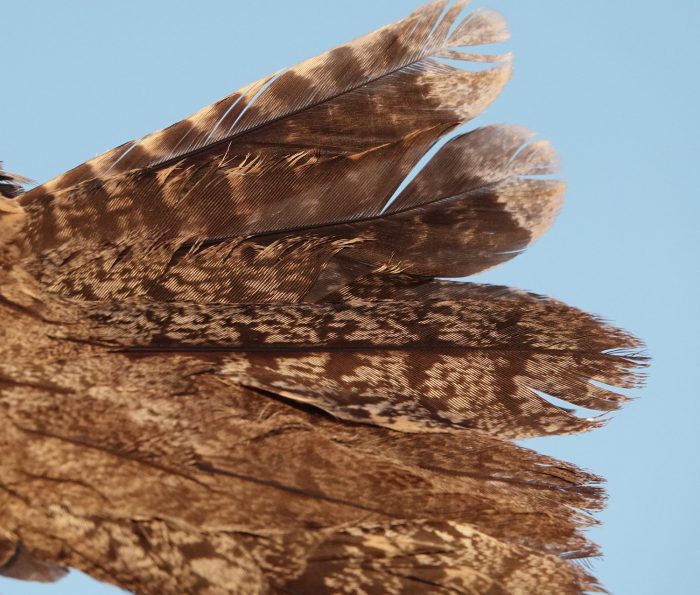
Details of the tail of the Rufous-cheeked Nightjar. Only bird ringers have the privilege of seeing this component of bird biology.
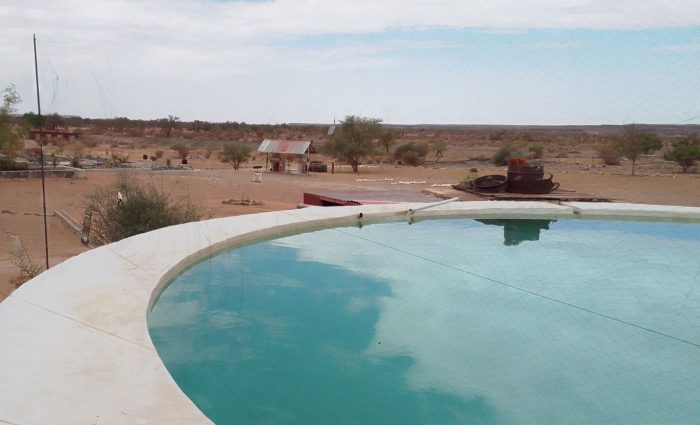
We put a mist net over the swimming pool. You need to do visual work to see it. The target species was Little Swift. We caught 22 here!
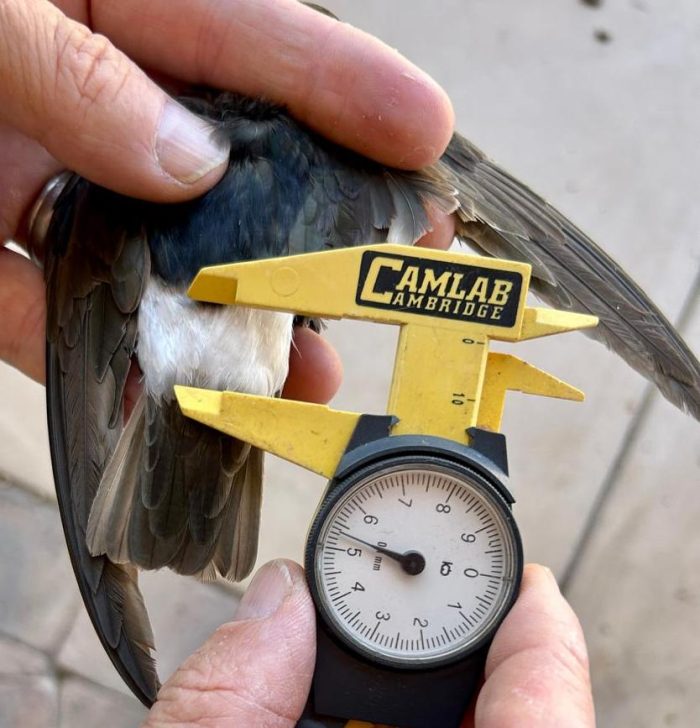
The width of the white rump of this Little Swift is 15.4 mm.
These are the species we handled while we were at the Alte Kalköfen Bird Observatory. The species in red have links to structured species texts on the website of the Biodiversity and Development Institute. The full list of species with these structured texts is here.
| Species | Count |
| Namaqua Sandgrouse | 2 |
| Speckled Pigeon | 7 |
| Ring-necked Dove | 3 |
| Laughing Dove | 3 |
| Rufous-cheeked Nightjar | 2 |
| Little Swift | 22 |
| White-backed Mousebird | 7 |
| Acacia Pied Barbet | 1 |
| African Red-eyed Bulbul | 1 |
| Mountain Chat | 1 |
| Familiar Chat | 7 |
| Kalahari Scrub Robin | 4 |
| Chestnut-vented Warbler | 3 |
| Marico Flycatcher | 4 |
| Dusky Sunbird | 1 |
| Cape Sparrow | 54 |
| Scaly-feathered Finch | 20 |
| Southern Masked Weaver | 7 |
| Green-winged Pytilia (Melba Finch) | 1 |
| White-throated Canary | 1 |
| Yellow Canary | 11 |
| 22 species | Total 162 birds |
Is the Alte Kalköfen Bird Observatory important?
Yes!
The most important contribution that the Alte Kalköfen Bird Observatory aims to make is in the study of nomadic bird species. Broadly speaking these have been neglected, largely because they are difficult to study. The Alte Kalköfen Bird Observatory will tackle this challenge.
There is a paper in the journal Biodiversity Observations which explains the value of the Alte Kalköfen Bird Observatory expansively. It is available freely; it is Open Access. The title is the Opening of the Alte Kalköfen Bird Observatory in southern Namibia, February 2025.
Are there some photographs from the opening ceremony for the Alte Kalköfen Bird Observatory?
Here is a sample!
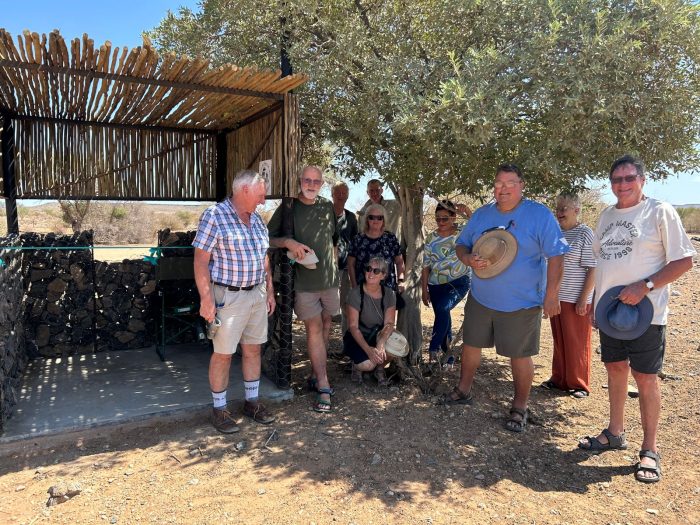
Even though it was not a big event, it was an important one. We gathered outside one of the hides at the Alte Kalköfen Lodge; there is a thin blue ribbon blocking the entrance! We made speeches appropriate to the occasion, cut the ribbon …
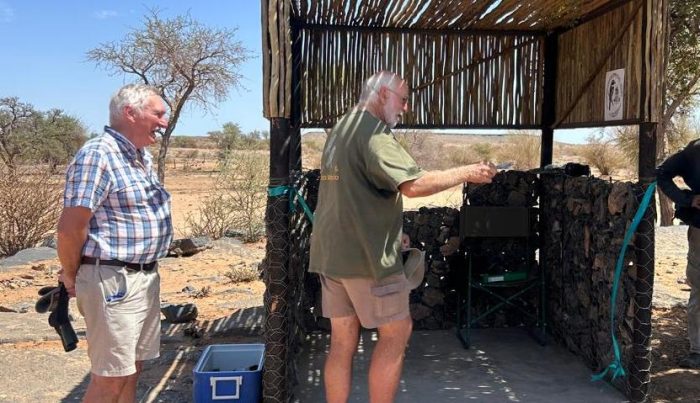
… and had a party …

Here is the logo of the Alte Kalköfen Bird Observatory, which is also attached inside the hide in the photographs above!
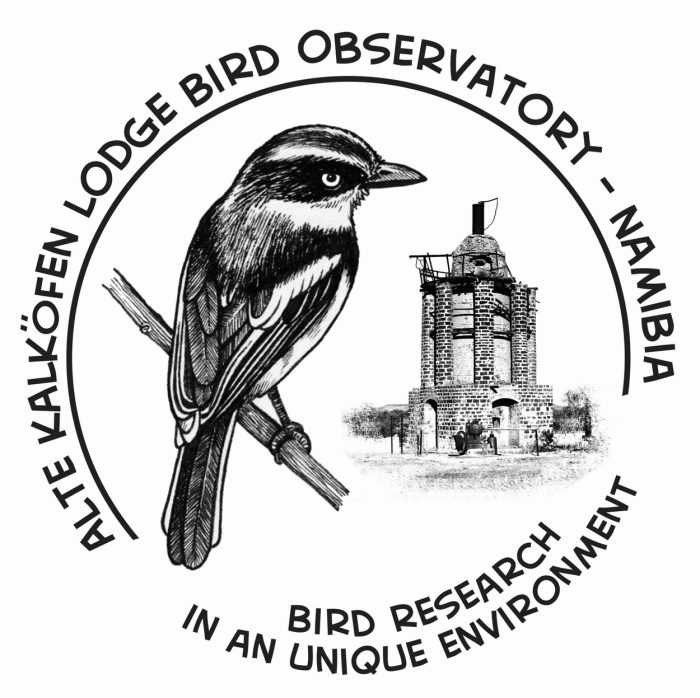
Were we blind to all the other animals, except birds?
There is an amazing array of biodiversity at the Alte Kalköfen Bird Observatory …

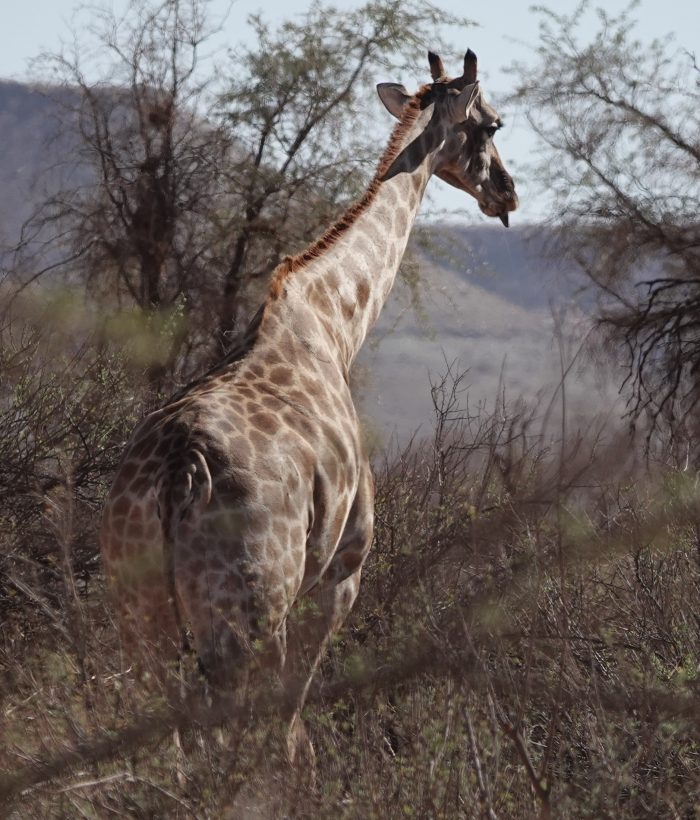
The Alte Kalköfen Lodge has an area of 20,500 ha (more easily visualized as 22 km east to west and between 10 km and 15 km north to south). The large mammals on the property include Gemsbok and Giraffe. They regularly walk past the lodge in the bed of the Gurib River.

This moth is a Cream-striped Owl Cyligramma latona. This one was about 7 cm across.
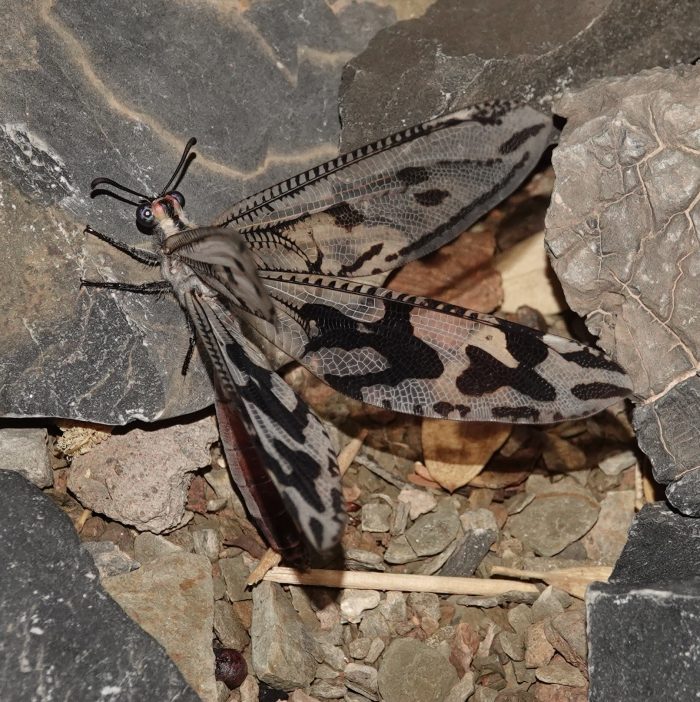
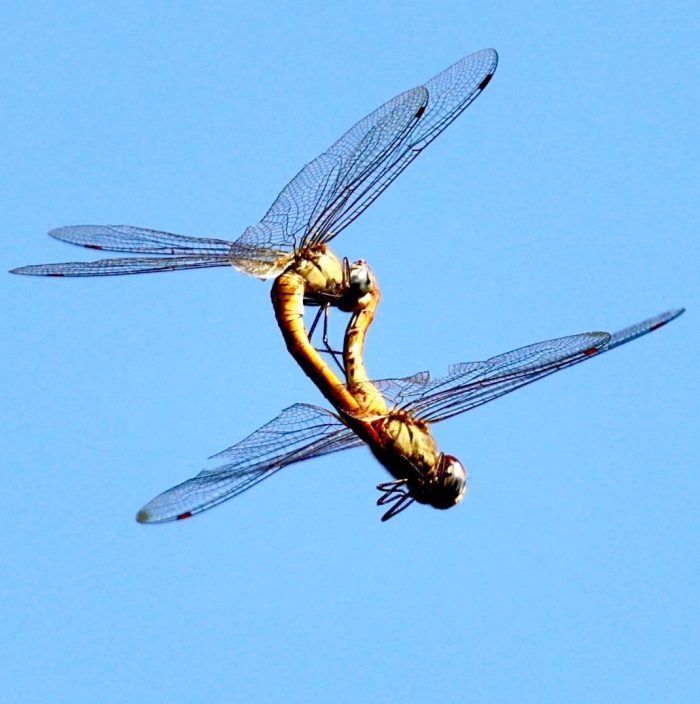
On the left is a Giant Antlion Palpares immensus. It is is one of the largest antlion species in the world, a species of dry habitats. It is widespread in Namibia, and its range extends northwards into southern Angola, and southwards into the dry western parts of South Africa, mainly the Northern Cape. It has a structured species text on the BDI website. On the right is Pantala Pantala flavescens, also known as the Wandering Glider. This is one of the world’s most fascinating dragonflies. The only way to explain its patterns of occurrence in India and Africa is to include a multigenerational migration across the northwestern Indian Ocean in its annual cycle! This Open Access paper in the Journal of Tropical Biology describes how this works: Do dragonflies migrate across the western Indian Ocean?
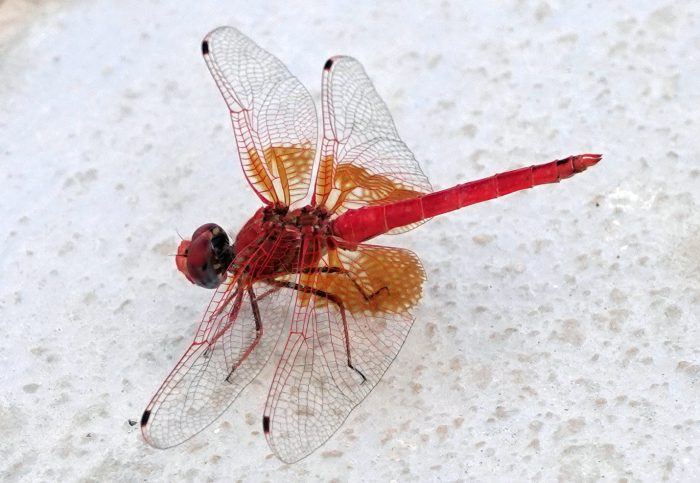
The swimming pool hosted a good collection of Orange-winged Dropwings Trithemis kirbyi. This is probably the commonest dragonfly of the arid west of southern Africa.
When are we going back to Alte Kalköfen Bird Observatory?
The plan is to return in January-February 2026. Our thinking is to support Roy Earlé, the coordinator of the bird observatory, by having a small group of ringers (and trainee ringers) there continuously for a period of several weeks. We envisage that people will be leaving and arriving in a staggered pattern, so it doesn’t happen that one group of ringers is replaced totally by the next. Duration of stay is optional, from a few days to a few weeks!
On our next visit, we are hoping to be able to stay in the Sandverhaar farmhouse, photographs below …
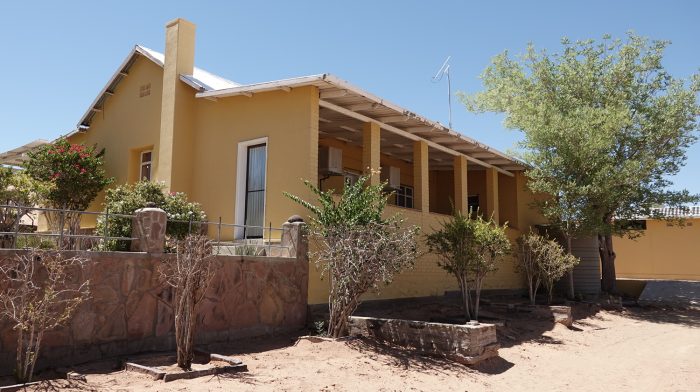
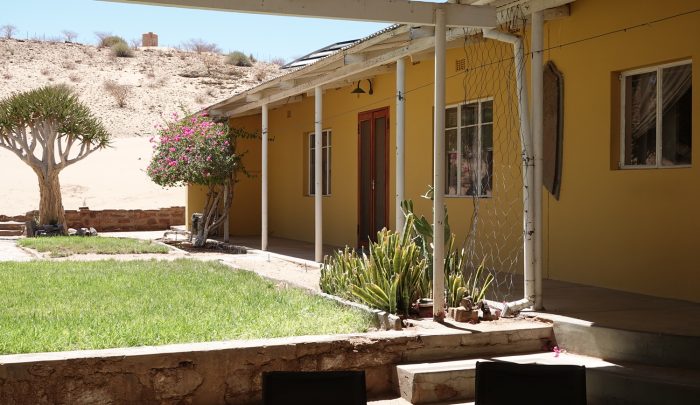
What happens when the rain comes?
Rainfall in this region is erratic. The daily “wetness index” can be visualized as a line through time that has occasional upward steps, and then long periods during which it fades gently downwards as the sun slowly sucks the moisture out of everything. Ultimately the downward curve bottoms out and becomes almost flat. Then we have drought conditions, which can last for a bunch of years!
We had a few good showers during our visit, but really good rains arrived soon afterwards. There are two photographs and a video below …
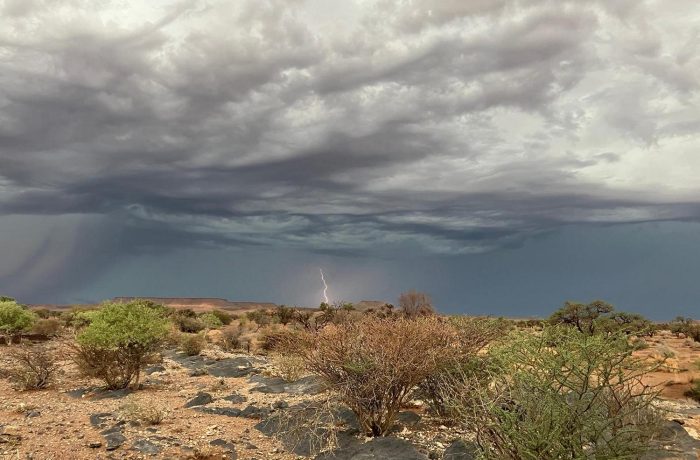
Lightning
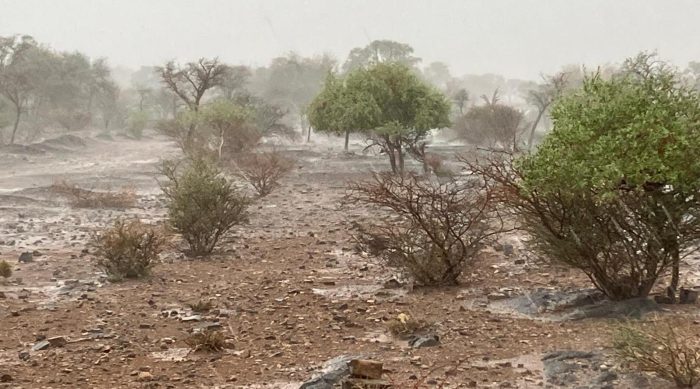
Real rain
,,, and the Gurib River becomes a river! And then it becomes a river flowing with enthusiasm …
… this time, it flowed for seven days. That;s the record for the past decade; previously it has flowed for two or three days. Most of this water hit the ground many kilometres away in the mountains to the north.. Ultimately, its destination is the Atlantic Ocean at Oranjemund, but it gets there via the Fish River Canyon and the Orange River.
Before the B4 national road was built (about 2 km upstream from here) there was just the one bridge (shown in the video) over the Gurib River, The old main road from Keetmanshoop to the coast at Lüderitz, and the railway line, shared this bridge!
There is a list of blogs for BDI ringing events here.
Future BDI events are listed here. Keep an eye on this to find details of our next visit to the Alte Kalköfen Bird Observatory.

